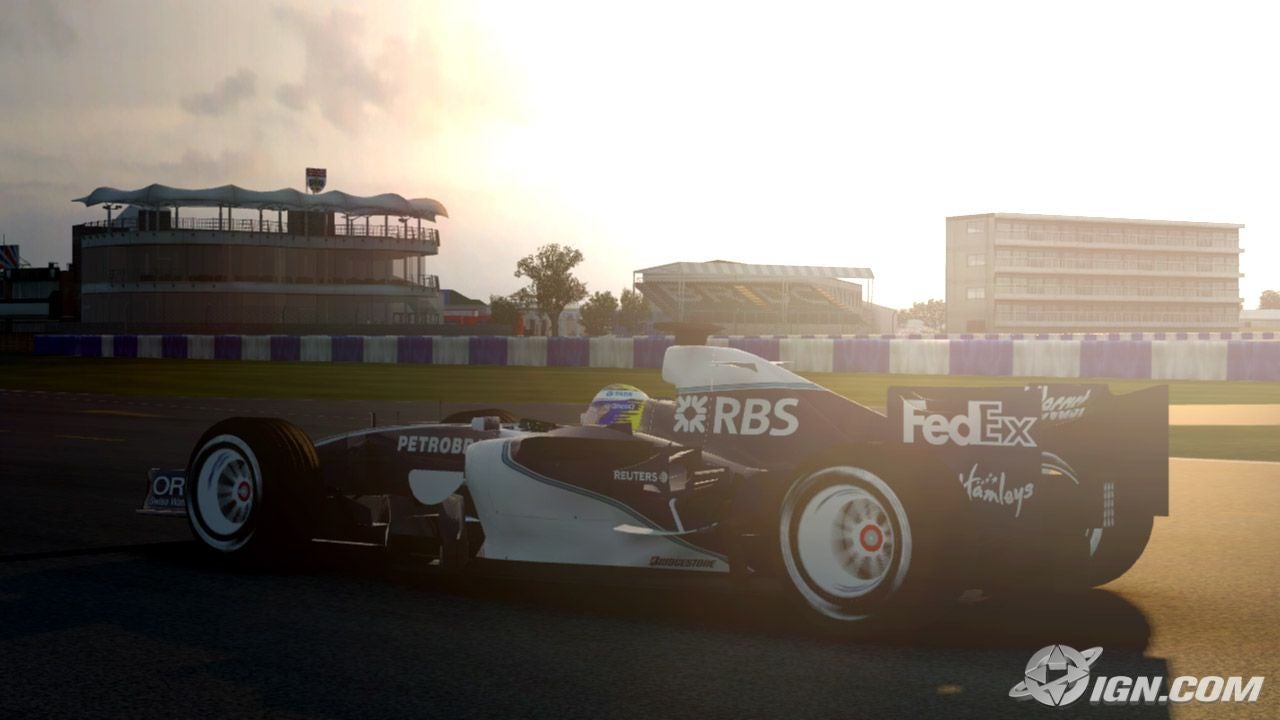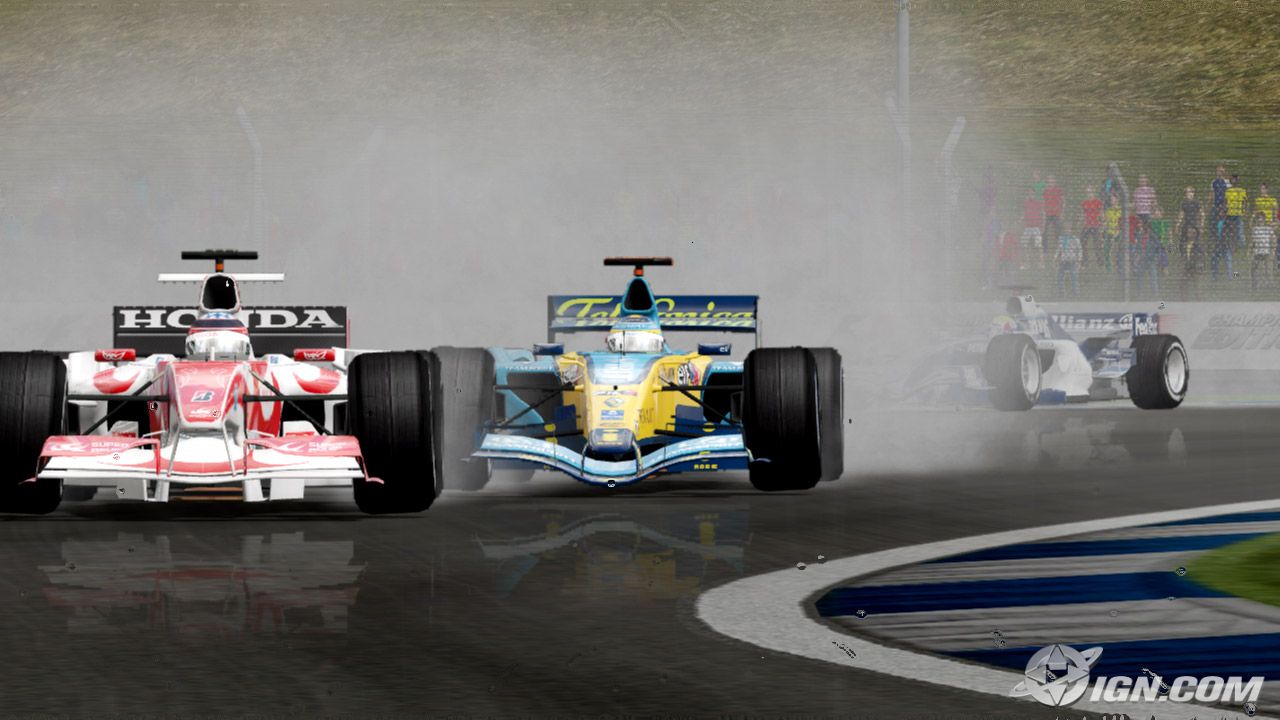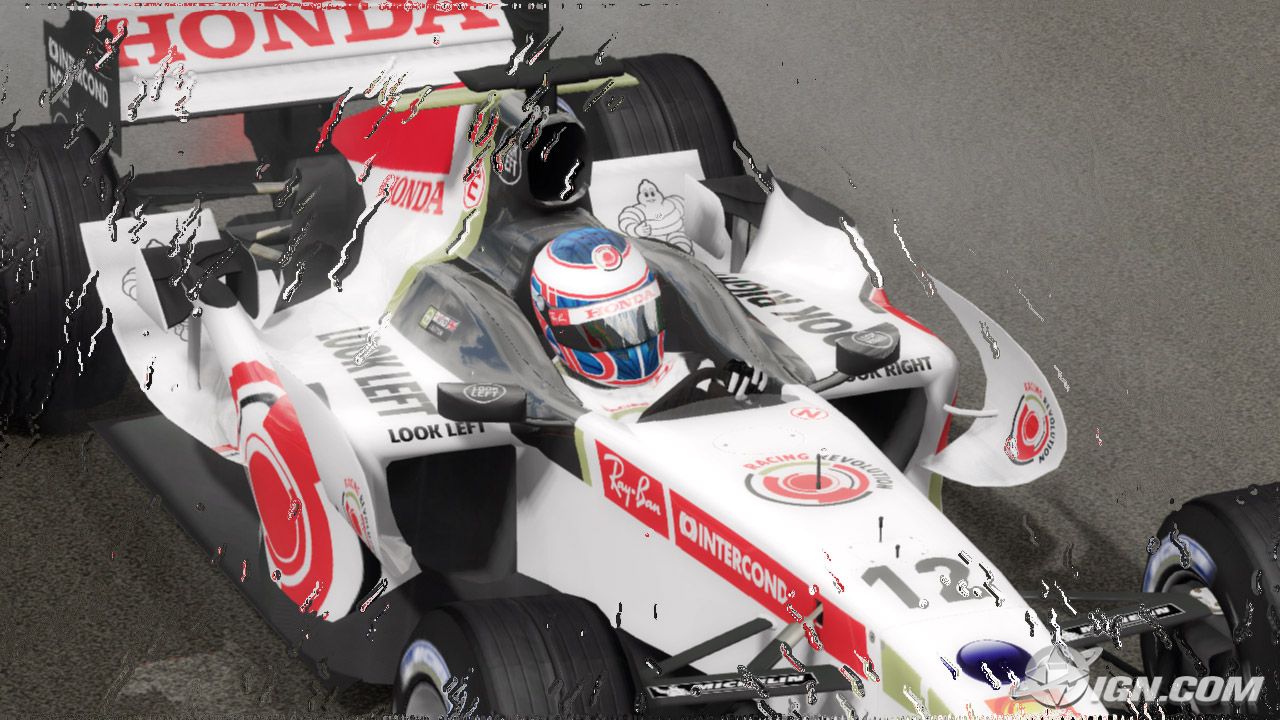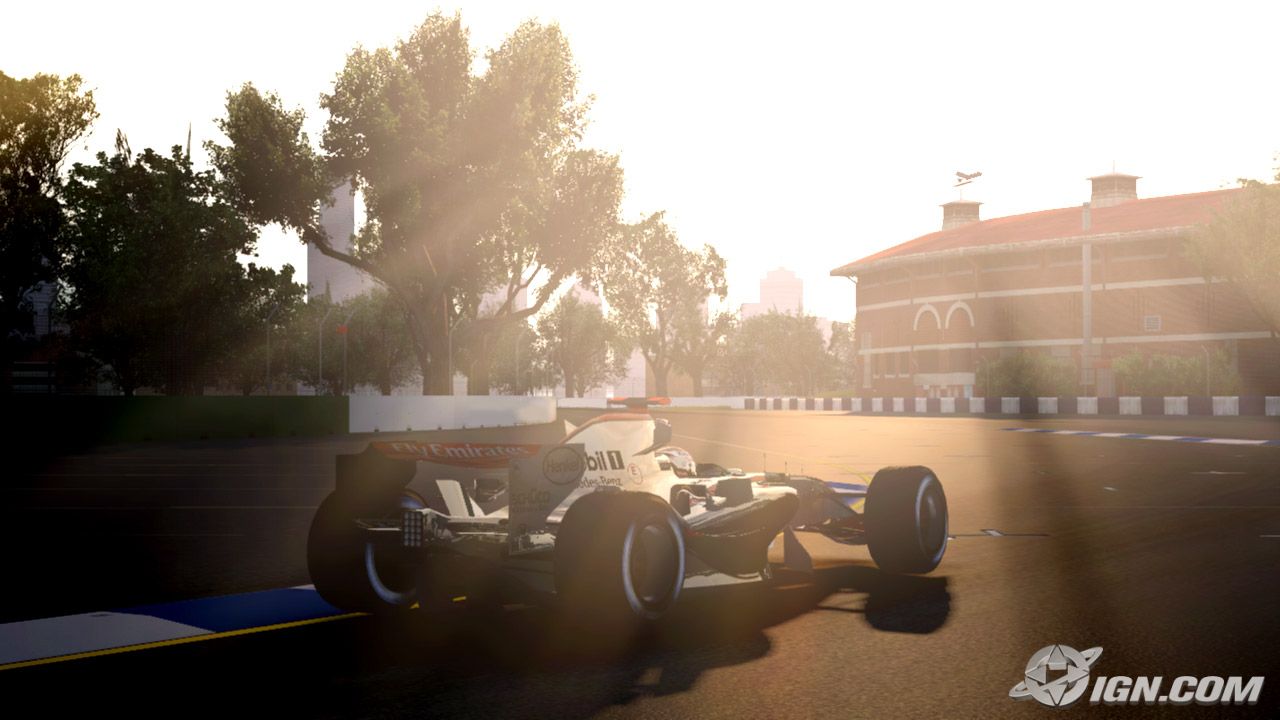IGN: Breaking the Formula: PS3 F1 Creator Speaks Out
For those who don't want to read all of it, summary :




UK, December 1, 2006 - It's 211 miles from IGN UK's London offices to Sony's Liverpool studios. In an F1 car it would take just over an hour to get from door to door but unfortunately this reporter has been relegated to a busy, packed train. After almost three hours of sitting with our knees up by our ears, we make it to Merseyside. The reason we've endured the hardship of riding on public transport (where's the IGN helicopter when you need it?) is because Sony is showing off a brand new build of Formula 1 Championship Edition on PS3 and Graeme Ankers, the game's director, is desperate to give IGN the scoop on all the latest details…
IGN UK: What advancements have been made since you last showed the game at Tokyo Game Show?
Graeme Ankers: It's come a long way since September. Things are changing and happening every day but I guess the biggest difference is with the particle systems and the wet weather - we've made some big improvements in that respect. You can now see the reflections of the cars on the wet surface of the track and that's quite a striking visual feature. It's also impressive from a technical point of view, especially when you have all 22 cars racing together and the spray that the tyres kick up is made up from individual particles of water.
We've enhanced the physics on the collisions and the damage system, plus there's been a lot of work on the underlying game engine. All of the tracks are now in the game - there were only two in the TGS code - and we've incorporated the 'dawn skies' time session, where the cars go out for qualifying early in the day just as the sun is rising, casting long shadows on the track.
We feel we've made great headway in terms of really utilising the power of the PlayStation 3 and getting the most out of the hardware.
IGN UK: What has the power of PS3 enabled you to achieve that you couldn't before?
Graeme Ankers: It's a variety of things really. Moving F1 into the next generation meant we had to up every single element of the game. If one aspect of the game isn't quite up to the standard of the others, whether it was the sound or the graphics, it's very noticeable on next-generation hardware. So making sure everything is of the highest standard has been one of the biggest challenges. It's no good having fantastic visuals if the audio isn't quite right.
But PS3 has enabled us to push ourselves further. On PlayStation 2, with 22 cars on the track, we were getting to the point of maxing out the hardware and were using every trick we knew to get every bit of power out of the machine. On PlayStation 3 we've been able to do all the AI and behaviour routines that give that feeling of live action racing. That's especially important because there's now more strategy to the game, because if it's a six-lap race you have to make one pit-stop or more if it's longer.
The extra power has also meant we can make lots of events happen simultaneously, with the lighting, the audio and the detail all enhancing experience. It's only a first-generation PS3 game too, and we're already constantly thinking of ways we can make improvements further down the line.
IGN UK: How did you find the transition from PS2 to PS3?
Graeme Ankers: It certainly presented us with a unique set of challenges! We had to really look at how we developed games in the past and changed our systems. The difference in the volume of data that's being moved around is enormous alone - a track of the PS2 was about 8MB; on PS3 it's 80MB and there are 19 of them, plus they have to be lit realistically. To give you an idea of the power of PlayStation 3, when we first started developing the game, for the first six months we were using high-end PCs to handle all the mundane pipeline stuff. But we ended up ditching them all and replacing them with a rack of PS3s because they handled all of the information quicker. In terms of raw processing power it absolutely rips apart a high-end PC.
But to get the results out of it, out of the SPUs and sound system, we've had to re-engineer our systems specifically for it. That's been a challenge for us but I'm proud of what we've achieved in 14 months.
IGN UK: How closely have you worked with the F1 teams and orgainsers to ensure the game is as accurate as possible?
Graeme Ankers: The beauty of having the exclusive F1 licence since 2003 is that we've had a really good relationship with all the Formula 1 teams, so we get the blueprints for the cars, the specs for the engines, details of BHP, torque levels, what happens with the gears… As soon as they develop a new car we get all that information and it's fed straight into the game. As a result, the cars handle pretty accurately, lapping to within a tenth of a second of what they'd do in real life.
Obviously all the track data is accurate and is matched to the cars too. We've even had blueprints for tracks before they've been built and have a tool that extracts the information and feeds it into the game. In 2005, when the F1 season introduced Bahrain, we had the track up and running in the game when it was a building site in real life. Jenson Button had a drive around the course before it actually existed!
IGN UK: With all of the driving aids on, F1 CE is a game that's surprisingly easy to pick up and play, but do you think of the game as more of a simulation?
Graeme Ankers: It's actually a very complex simulation and one of the big challenges has been to create a game that can be played by everyone, from entry-level gamers to Formula 1 fans who know everything about the sport. It can be played on a simple level or you can get stuck in; there are over 40 options in the garage to play around with and the player can take each of the individual settings and changing them manually. Players can in effect change the blueprint of a car that we get from the factory and tailor it however they want. They can customise their car for each track too, so there's a set-up for Monaco, another for Monza and so on.
IGN UK: The pit-stop mini-game is a nice addition too…
Graeme Ankers: That was something that came about because we really wanted to make a game rather than a sim. At its heart Formula 1 Championship Edition is a game after all. So we wanted to get across how important pit-stops are in real life but at the same time make them fun. If you mess up a pit-stop in the real world it's going to cost you a position or a couple of seconds and it's the same with the mini-game - if you get the button combinations absolutely right you'll get out of the pits quickly and make up any lost time. But mess up the combination and you'll lose a few seconds.
IGN UK: The wet weather effects look fantastic but is the weather system dynamic?
Graeme Ankers: It is, yes. It can start off sunny at the beginning of a race but then turn cloudy and overcast. Sporadic light rain will then fall, with a little spray coming off the back of the cars before it moves onto heavy rain. That can actually take place over the course of a single lap, so in a 10 lap race is can start sunny, rain in the middle and then dry up at the end, with the racing lining drying faster as the cars go round. This obviously means you'll need to go into the pits to change your tyres while the other cars are trying to do the same.
Players can determine if they want the weather to change during a race, but if it's selected it's randomly generated, although the game does take into account the track you're racing on, so it's more likely to rain heavily in Malaysia for example.
IGN UK: Although the number of online players has yet to be confirmed, you mentioned it will be a minimum of 11 human racers with the rest of the pack made up of AI cars. Have you encountered any problems that have prevented you from including 22-car all-player online races?
Graeme Ankers: We haven't encountered problems as such but we're restricted by time. It's a massive game to put together, with 18 tracks out of the box and one unlockable track. Testing all that stuff online takes a lot of time, so while we're saying we have 11 right now we may up that nearer completion. But the minimum will be 11. It's also nice that players can jump into any race rather than having to wait in a lobby for the previous one to finish.
For those who don't want to read all of it, summary :
To give you an idea of the power of PlayStation 3, when we first started developing the game, for the first six months we were using high-end PCs to handle all the mundane pipeline stuff. But we ended up ditching them all and replacing them with a rack of PS3s because they handled all of the information quicker. In terms of raw processing power it absolutely rips apart a high-end PC.







 id any one observe that,in the second pic,the cars seem to be on maglev just a few centimeteres above ground
id any one observe that,in the second pic,the cars seem to be on maglev just a few centimeteres above ground 


















